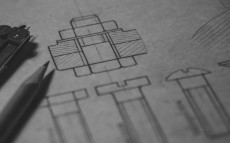- pathfindersAI
- Job Profile
Fashion Designers
Summary
The Role and Future of Fashion Designers
What They Do
Fashion designers are the creative professionals responsible for conceptualizing and creating apparel and accessories. They play a pivotal role in the fashion industry by transforming ideas into tangible garments that express aesthetic values while meeting functional needs. These designers are intricately involved in every stage of the fashion design process, from initial sketches and fabric selection to final production. Their work reflects societal trends, cultural statements, and individual expressions, making fashion design a dynamic field that continually evolves with time.
Job Responsibilities
The responsibilities of fashion designers are multifaceted and diverse. At the core of their duties lies the task of creating new fashion concepts by sketching designs, selecting fabrics, and overseeing the manufacturing process. Designers often work with a team, which may include pattern makers, seamstresses, and other industry specialists, to bring their creations to life. They are also responsible for staying updated with the latest fashion trends and market demands, often attending fashion shows, trade fairs, and industry events. Additionally, fashion designers conduct market research to understand consumer preferences and collaborate with marketing teams to promote their collections. Effective communication with suppliers and manufacturers is crucial to ensure the final product aligns with the original design.
Essential Skills
Fashion designers must possess a unique blend of creativity, technical knowledge, and business acumen. Key skills include an eye for color, texture, and detail, along with proficient drawing and sewing abilities. An understanding of textiles and garment construction is fundamental, as it allows designers to innovate with fabric manipulations and new construction techniques. Computer-aided design (CAD) proficiency is increasingly important, enabling designers to create digital sketches and patterns. Strong communication and collaboration skills are essential for working with diverse teams and stakeholders. Additionally, an in-depth knowledge of market trends and consumer behavior can greatly enhance a designer’s ability to create commercially successful products.
Educational Pathways
Aspiring fashion designers typically pursue formal education to gain the necessary skills and industry knowledge. Many begin with a foundation in an Associate or Bachelor’s degree in Fashion Design, Fashion Merchandising, or a related field. These programs often include coursework in drawing, color theory, sewing, textiles, and fashion history. Students also benefit from practical experience through internships, which provide hands-on learning in real-world settings. Advanced degrees, such as a Master’s in Fashion Design or a Master of Fine Arts (MFA), are available for those seeking specialization or leadership roles in the industry. Continuous learning through workshops, certifications, and staying abreast of industry trends is essential to maintain competitive advantage.
Career Prospects
The career prospects for fashion designers are diverse and can vary significantly based on experience, talent, and networking abilities. Graduates can find opportunities in various settings, including fashion houses, retail companies, wholesale businesses, and costume design for film and theater. Some designers choose the entrepreneurial path by starting their own fashion labels. The job market for fashion designers is competitive, and success in this field often requires a combination of creativity, resilience, and business savvy. Employment opportunities are expected to grow at a modest rate, driven by consumer demand for new styles and sustainable fashion solutions. Designers with a strong portfolio and experience in niche markets or emerging trends, such as eco-fashion or technology-integrated clothing, may find enhanced opportunities.
Conclusion
In conclusion, fashion designers are the architects of style, translating creative visions into wearable art. Their role involves a blend of artistic talent, technical skills, and a deep understanding of market dynamics. The journey to becoming a successful fashion designer typically begins with formal education and continuous, practical experience. While the industry is competitive, the evolving demands for innovation and sustainability present ongoing opportunities for creative professionals. Fashion designers who stay adaptable and continuously refine their craft are poised to leave a lasting impact on the ever-changing landscape of fashion.
Video
Compensation
| State | Median Salary | Median Hourly | Positions |
|---|---|---|---|
| AZ | 54,710 | 26.30 | 80 |
| AR | 96,570 | 46.43 | 170 |
| CA | * | * | 4,950 |
| CO | 91,830 | 44.15 | 250 |
| CT | * | * | 30 |
| FL | 60,430 | 29.06 | 760 |
| GA | 79,560 | 38.25 | 160 |
| IL | 63,970 | 30.76 | 90 |
| KS | 50,950 | 24.50 | 70 |
| KY | 45,690 | 21.97 | 60 |
| MA | 98,620 | 47.41 | 440 |
| MI | 56,660 | 27.24 | 50 |
| MN | 37,930 | 18.23 | 260 |
| MO | 60,100 | 28.90 | 90 |
| NV | 74,700 | 35.91 | 50 |
| NH | 87,620 | 42.13 | 80 |
| NJ | 95,500 | 45.92 | 330 |
| NY | 80,780 | 38.84 | 7,930 |
| NC | 64,750 | 31.13 | 410 |
| OH | 79,500 | 38.22 | 310 |
| OR | * | * | 850 |
| PA | 78,720 | 37.85 | 220 |
| RI | * | * | 40 |
| SC | 39,920 | 19.19 | 120 |
| TX | 35,150 | 16.90 | 920 |
| UT | 67,610 | 32.51 | 200 |
| VA | 41,240 | 19.83 | 130 |
| WA | 80,860 | 38.88 | 510 |
| WI | * | * | 70 |
Similar Occupations
In this area you will find other occupations that are close to the one you were viewing in tasks, knowledge and work environment. If the primary job profile you are viewing isn't quite to your liking, take a look around and see what else is available.
Basic and Premium Accounts have more alternative occupations available than the Free account.

Commercial and Industrial Designers - 27-1021.00
Commercial and Industrial Designers develop and create products and systems that improve functionality, design, and usability for consumer and industrial markets. They blend art, business, and engineering to conceptualize items ranging from everyday household objects to sophisticated machinery, ensuring both aesthetic appeal and practical efficiency.
-
$76,250/yr
Median Pay -
30,810
Number of Jobs

Costume Attendants - 39-3092.00
A Costume Attendant manages and maintains costumes for theatrical productions, ensuring they are clean, repaired, and correctly fitted for each performance. They also assist actors with quick changes and costume adjustments backstage, contributing to a smooth and efficient show.
-
$52,370/yr
Median Pay -
6,300
Number of Jobs